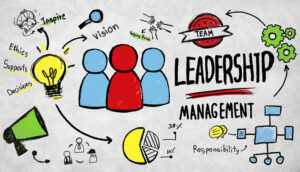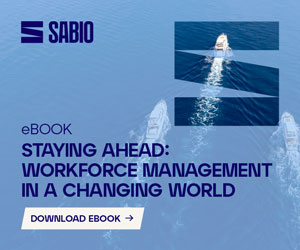I would like to know the international standards regards the number of agents one Team Leader can effectively supervise. What is too much for one Team Leader and what other practices can we benchmark against?
Answer 1:
I was fortunate to recently manage a company call centre where the team leader to agent was 1:6 and what a big difference it made in morale, motivation and performance.
If a TL has 100% of his time dedicated to leading the team you could probably do 1:15 but in my experience you get dragged into projects and other distractions. So, a team lead can easily manage a team of 8-10 agents with his/her full attention.
Contributed by: Yasser Altaf
Answer 2:
I managed a team of 39 agents for six months on a technical helpline project. The most important factor in handling such a large team is building strong relationships. When your team supports you, managing them becomes much easier.
In every team, you’ll find that around 50% of agents are naturally skilled, while the rest need guidance and development. Mistakes are inevitable, but when agents feel confident that their Team Leader will not give up on them, they become more motivated to improve.
In those moments, treating them with patience, a smile, and genuine care elevates you beyond just being a Team Leader.
Contributed by: Mukesh
Answer 3:
An opportunity to work in those situations. I started as a TL fand worked up to Operations Manager. For most clients, the ratio tends to hang around 1 TL for every 15 agents. What you will find, centres will push for more agents per TL, thus reducing costs. Effectively, 18 agents should be max. For a new TL, I would suggest 12, but we don’t live in Disney World.
Anyone that says less than 1:12 is not or has not really worked as a traditional team leader in leading outsourcing centres such as Convergys, Sitel, West, Teletech, Sykes, etc. Granted, KUDOS to those guys that got easy street with 5 or 8!
I managed effectively because of the relationship I built with my team, it boils down to just that. Anyone that says otherwise is a fool. You get more work out of your team if you assist them and help them when needed.
TL’s that tend to hang out in the coffee/break room and sit and complain about the workload aren’t really doing their jobs. Been there, done that.
Now, what will you do as a TL one poster asked. I can’t say for every single call center out there, but expect a lot of call monitoring for quality, a lot of coaching and a lot of systems/reports. More than likely, you will run some sort of program/s that monitor efficiency on a day to day basis.
You will also obtain reports regarding their efficiency. Universally speaking, there is always things such as PTV (phone time variance), Schedule Adherence, AHT (average handle time) and probably most important, quality.
Depending on what type of business it is, this is going to be the big thing there. Monitoring the calls, scoring the calls, coaching the agents for performance.
Build a good relationship with your agents, let them know you care, and most of these fall in to place. Let them know what the metrics for your site are, show them where they are at, where they need to be and most importantly, HOW to get there. They will do it. Hope any of this helps
Contributed by: Annie
1:15
1:15 is the recommended ratio (supervisor per agents) to get an effective performance and reach the results.
Contributed by: Firenze
It Varies
Ask for a standard and you are most likely to get a range of answers. If you look at benchmark reports such as ContactBabel and Merchants you will find that practice will vary across countries and industry sectors.
Nevertheless, in my experience, best practice is closer to 1:8 (and no more than 1:12), with allowances for the experience of both supervisors and team members and the organisations quality structure (i.e. is their a separate group for call quality recording and feedback and how does this interact with the team leader)?.
If the ratio is too great the team is unlikely to be getting the coaching necessary for continuous improvement.
Contributed by: Mike Boyle
Other Factors Apply
It should be said that if a TL has 100% of his time dedicated to leading the team you could probably do 1:15 but in my experience you get dragged into projects and other distractions.
I think you need to factor those distracting factors in if you really want to set a base figure. Further there are other aspects (e.g. what’s your fluctuation, do you actually need to do IDPs?) .
There is a lot of stuff going into this so my guess is you’ll have to make individual decision rather than having a fixed number.
Contributed by: DocMors
Depends on the Team
Depends on the type of call centre and the parameters of the Team Manager, also on the structure of the business, call type/volume etc.
I’ve had a team of 25 and managed them all well, but in my current position I could only effectively have 18-20.
IMO, in large organisations that have quality teams, HR to hire, senior management for projects and WFM to run the centre, its a lot easier to have a larger team.
Contributed by: Chris
7-12
For call centres (ranging 50-75 agents), i think a team of 7-12 is always very effective. By effective i mean to give proper attention to them, solving their issues and simultaneously achieving KPIs of call centre.
Contributed by: Nauman
Depends on the TL Role
It’s dependant on the what the Team Leader role will entail. If you are in a contact centre which is very transactional based (i.e. directory enquiries) then the role may be more basic, general coaching, review of stats/KPI’s and attendance monitoring.
But if you are in a more customer experience, case management environment then coaching requirements are much more in depth, call handling, case handling, objective outcomes, impact on creating brand ambassadors.
In this case I would recommend having a Lead Coach to support the team and the team leader but also a lesser team size.
As said in another answer you need to take into account, other projects, succession planning (both for the team and the team leader).
Contributed by: M Henderson
12 is Good
I agree that the number of agents will differ per team according to Call Centre size. Twelve agents is a good number to work with as team building can be done in a proper manner. Team leaders always get overloaded with other work and then they loose focus regarding targets to be reached.
Contributed by: Andries Venter
No More than 1:12
The standards any benchmarking exercise offers is purely what the majority companies do, or the average of all parties evaluated. The reality is that companies budgets determine the ratio – and in traditional customer service call centres where the area is seen primarily as a cost centre and not profit centre, scenarios such as 1:15 exist.
I was fortunate to recently manage a company call centre where the team leader to agent was 1:5 and what a big difference it made in morale, motivation and performance.
Most probably comes closest to given a balanced figure 1:8 and no more than 1:12 (although more than 10 is pushing it) – however it all comes down to the bean counters and how much you can push them – the less agents per manager the better the management and performance.
Observation – where I have seen 1:25 these have been where agents work shifts out of sync with each other and not simultaneously.
Contributed by: Darryn
9
Well I’m a supervisor who manages a team of 9 Advisors while we have one manager who oversees the 2 sets of teams and that works out great My manager only gets involved if need be.
The moral on my team is great we laugh and joke but they know the line and not to cross it which is the main thing
Contributed by: Brett
It Depends on the Team
To answer the original question, after seeing what everyone else wrote, I just wish I had an opportunity to work in those situations. I started as a TL for Convergys corp and worked up to Operations Manager. For most clients, the ratio tends to hang around 1 TL for every 15 agents.
What you will find, centers will push for more agents per TL, thus reducing costs. Effectively, 18 agents should be max. For a new TL, I would suggest 12, but we don’t live in Disney World.
Anyone that says less than 1:12 is not or has not really worked as a traditional team leader in leading outsourcing centers such as Convergys, Sitel, West, Teletech, Sykes, etc. Granted, KUDOS to those guys that got easy street with 5 or 8!
I managed effectively because of the relationship I built with my team, it boils down to just that. Anyone that says otherwise is a fool. You get more work out of your team if you assist them and help them when needed. TL’s that tend to hang out in the coffee/break room and sit and complain about the workload aren’t really doing their jobs. Been there, done that.
Now, what will you do as a TL one poster asked. I can’t say for every single call center out there, but expect a lot of call monitoring for quality, a lot of coaching and a lot of systems/reports. More than likely, you will run some sort of program/s that monitor efficiency on a day to day basis.
You will also obtain reports regarding their efficiencies. Universally speaking, there is always things such as PTV (phone time variance), Schedule Adherence, AHT (average handle time) and probably most important, quality.
Depending on what type of business it is, this is going to be the big thing there. Monitoring the calls, scoring the calls, coaching the agents for performance.
Build a good relationship with your agents, let them know you care, and most of these fall in to place. Let them know what the metrics for your site are, show them where they are at, where they need to be and most importantly, HOW to get there. They will do it. Hope any of this helps…
Contributed by: Tim
1:8
I think that this is false economy. Good contact centres operate on much smaller numbers such as 1:8. By taking numbers higher your staff will be getting much less management time and less support time. Attrition will go up and people who are nopt so well trained will njot be able to turn to their team leaders for help. This will reduce customer satisfaction.
Contributed by: Jonty
Author: Jonty Pearce
Reviewed by: Robyn Coppell
Published On: 20th Mar 2009 - Last modified: 12th Sep 2025
Read more about - Call Centre Management, Call Centre Answers, Management Strategies, Staffing, Team Management





































